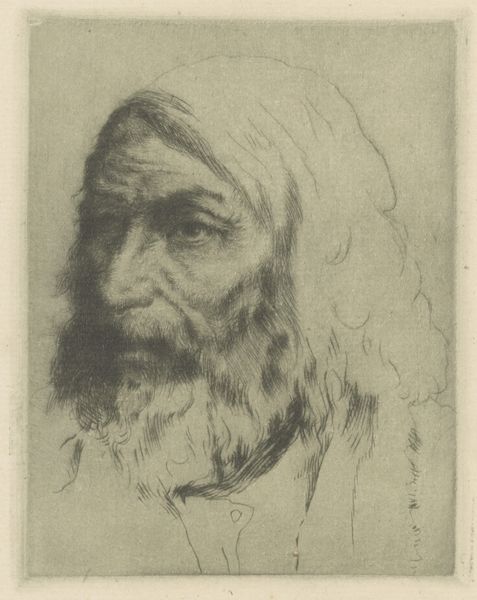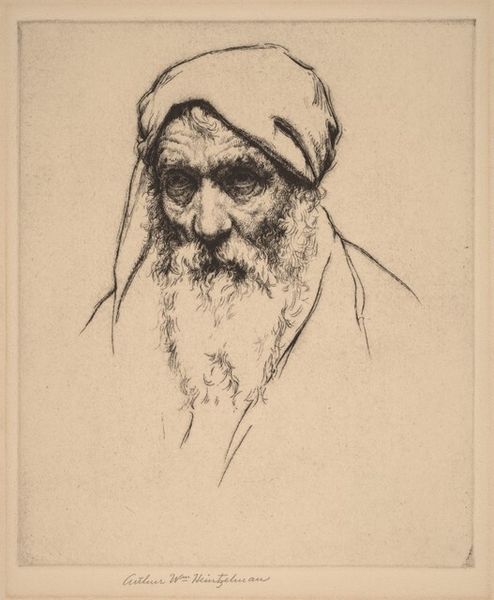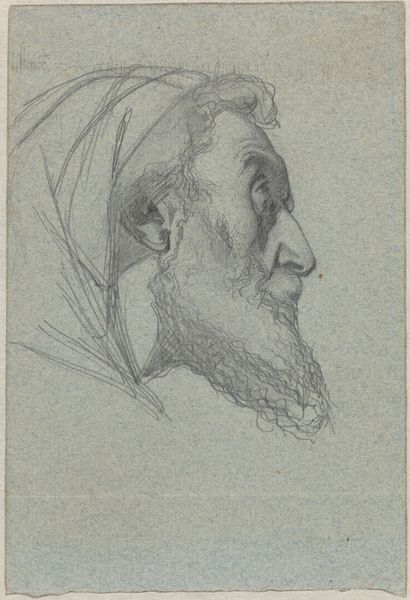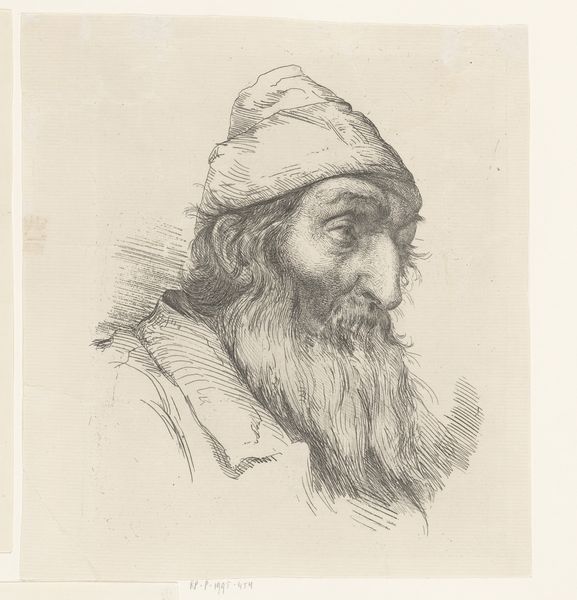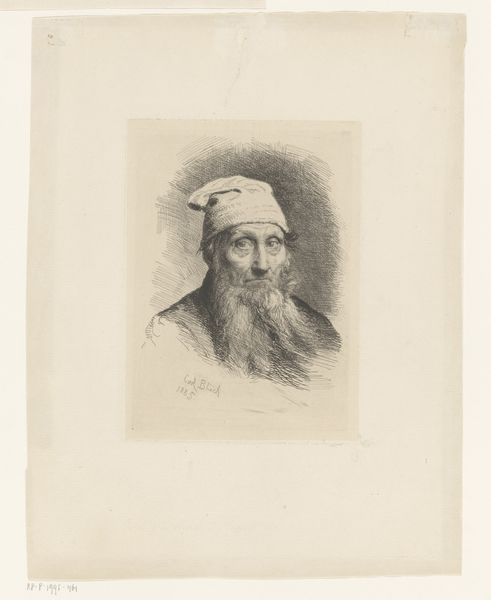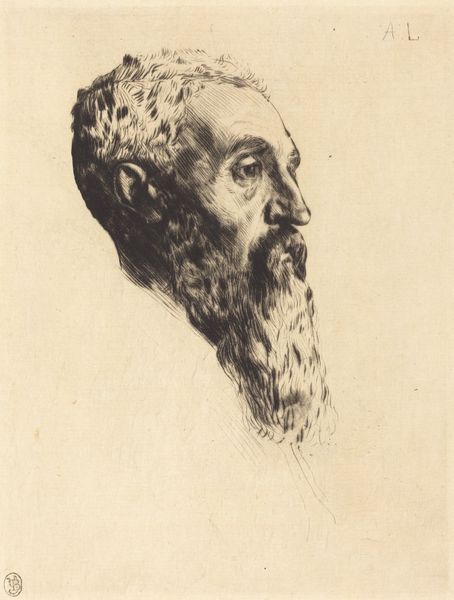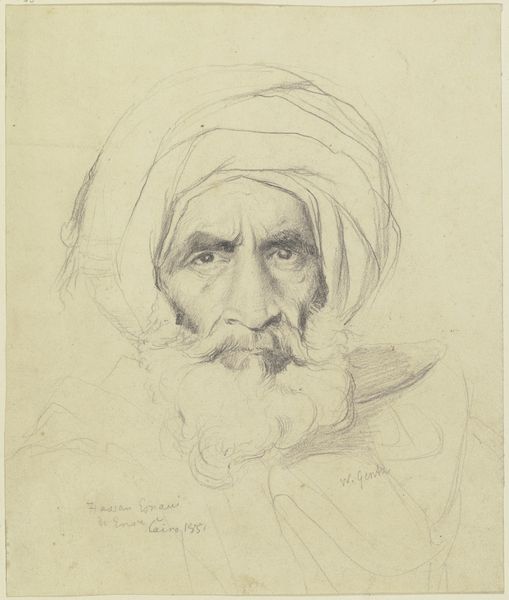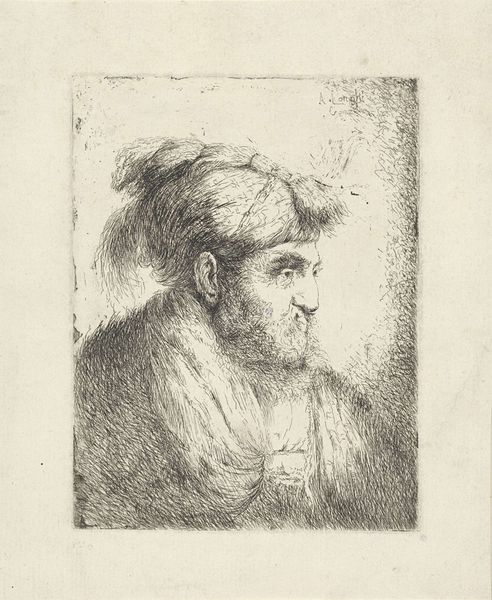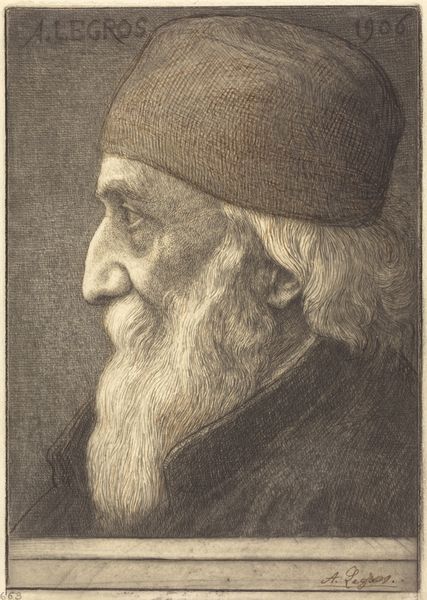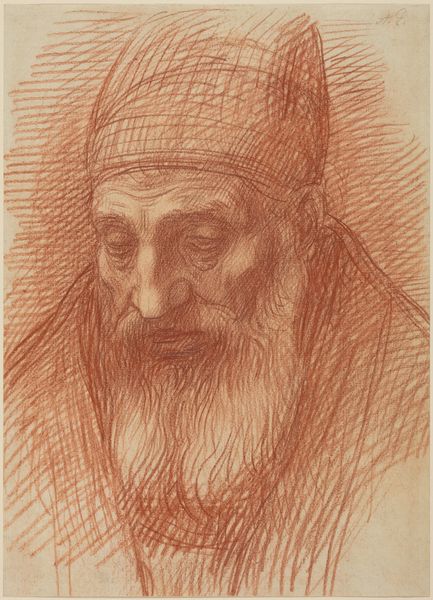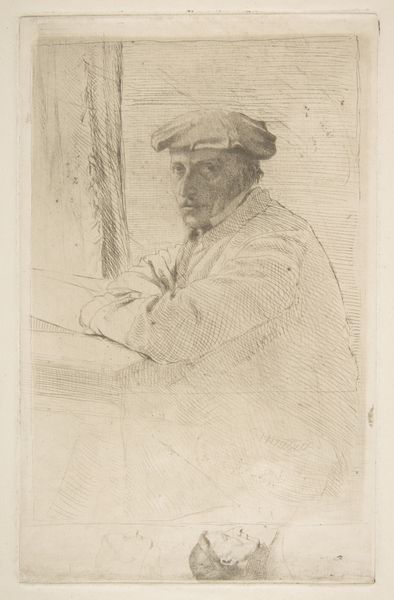
Dimensions: 295 × 223 mm (image/plate); 370 × 281 mm (sheet)
Copyright: Public Domain
Editor: This is "The Two Heads," an etching and charcoal drawing by Alphonse Legros from 1879, currently residing at the Art Institute of Chicago. I find the hatching technique used to depict the figures' faces really striking, giving it a kind of raw, textured feel. What does this artwork bring to your mind? Curator: The texture, the hatching—these are crucial. Legros was deeply engaged with the materiality of printmaking. Look at how the etched lines aren't just descriptive; they *construct* the form. He is thinking of labor. Consider too the etching revival movement of the time. It was driven by a desire to reclaim printmaking as a fine art, countering its industrialization and commercial use. So Legros isn’t simply depicting a face; he's making a statement about artistic production itself, about value of handwork. Editor: That's fascinating! So you're saying the choice of etching, instead of, say, painting, has political implications relating to artistic labor? Curator: Precisely. Etching allowed artists to directly engage with the production of multiples, but in a way that retained the artist's hand. Each print is technically an original, bearing the marks of its making. It's a challenge to the commodification of art, an insistence on process. Now, notice the paper: how do you think the surface of that impacts how we view the labor performed? Editor: I suppose that a smoother paper might almost conceal the individual marks that together create the portrait, while the current texture highlights the hand of the artist! Curator: Exactly. So what begins as a portrait ends as an exploration of the materials and the conditions of its making. What’s changed in how you look at this work now? Editor: I'll never see an etching the same way! Thinking about the labor involved really reframes how I appreciate not only the image but the artist’s statement on art's creation and value within society. Curator: Glad to have brought this awareness! Seeing art through its material and production truly deepens its significance.
Comments
No comments
Be the first to comment and join the conversation on the ultimate creative platform.
